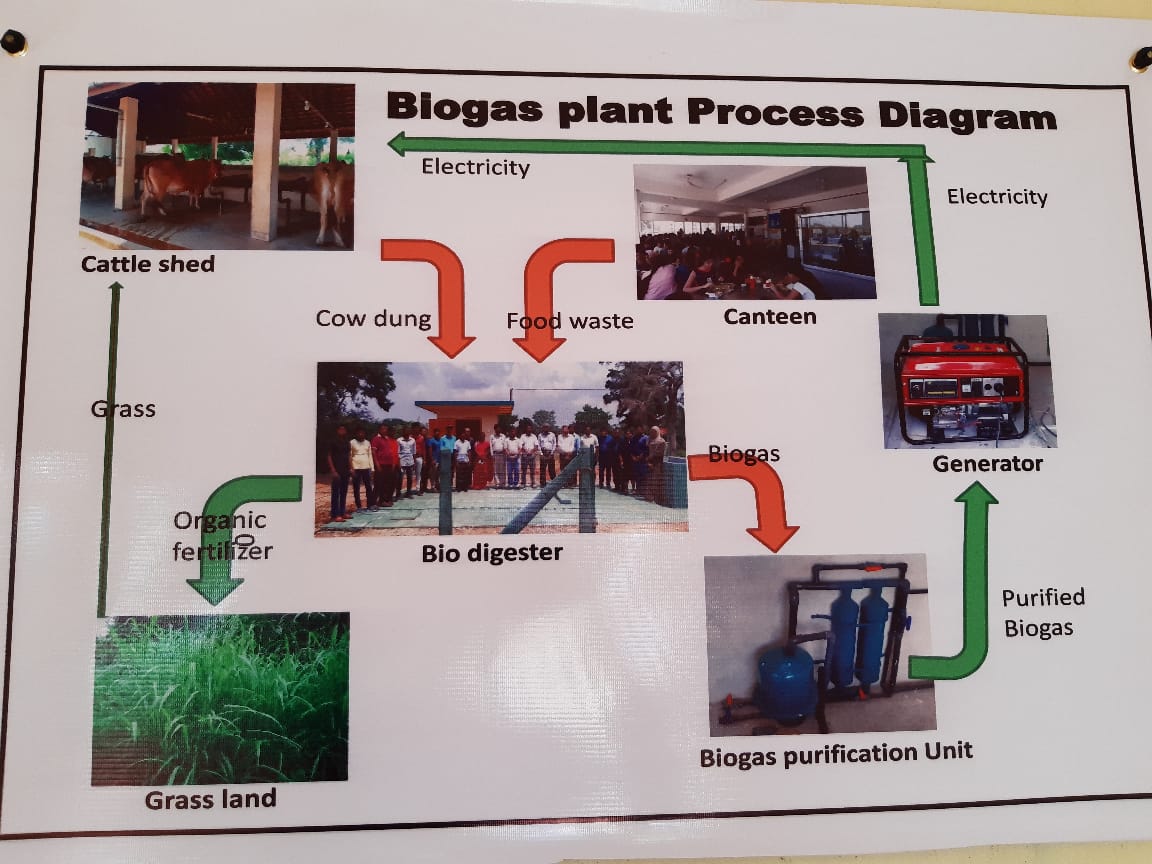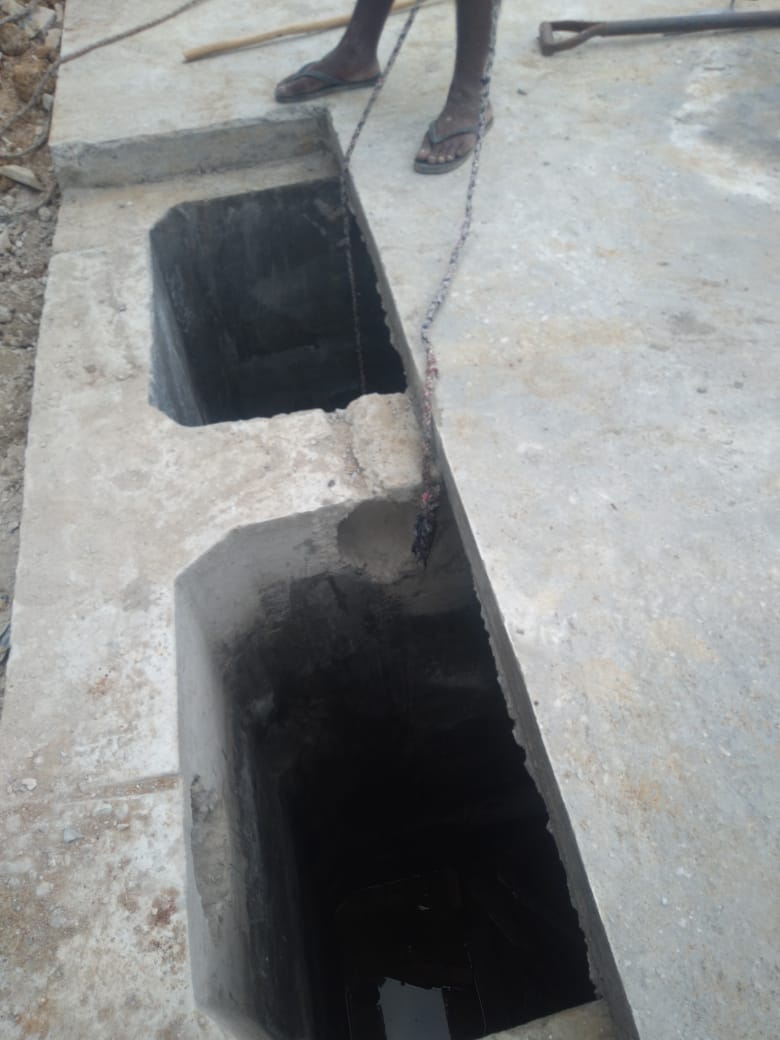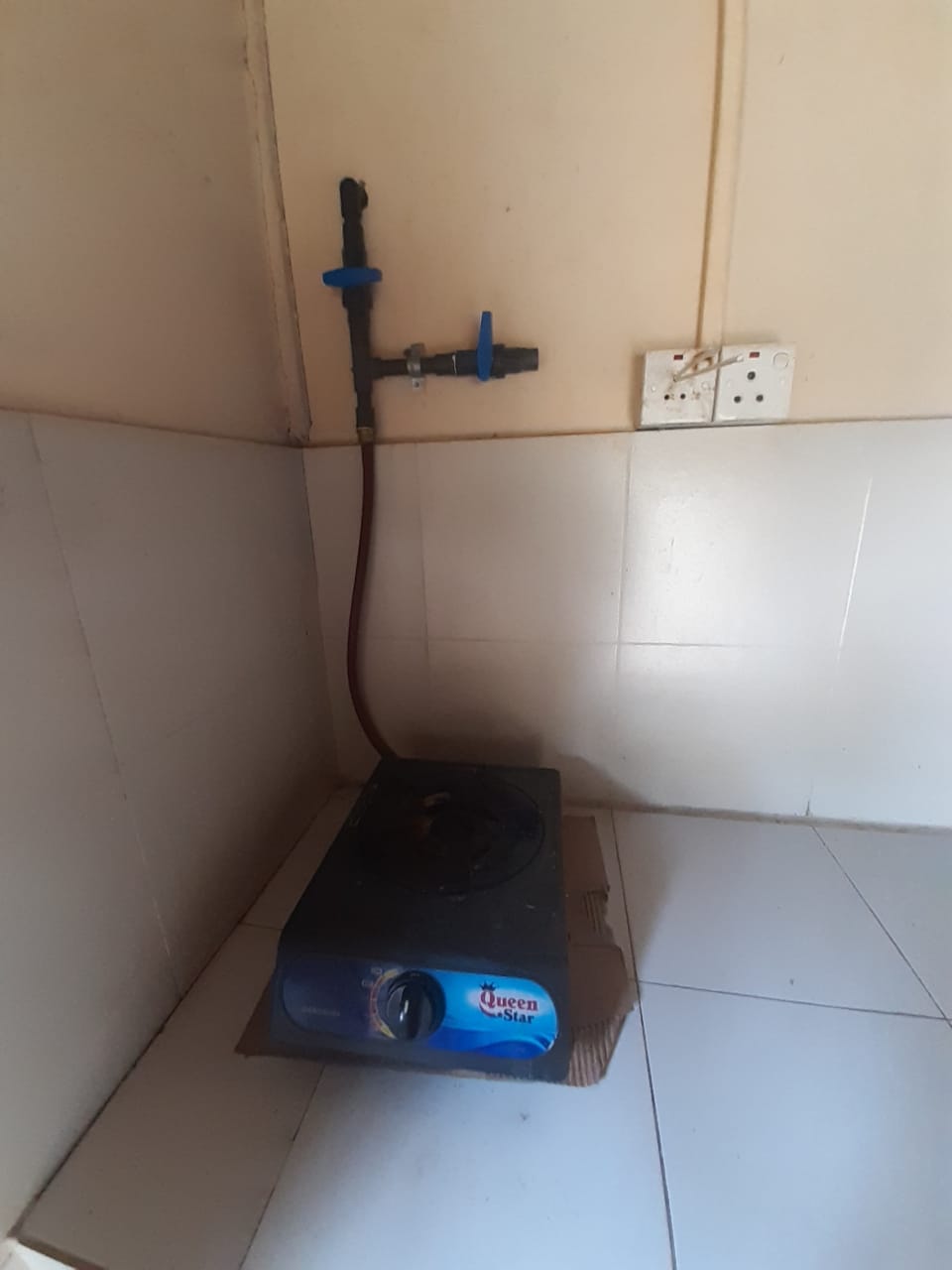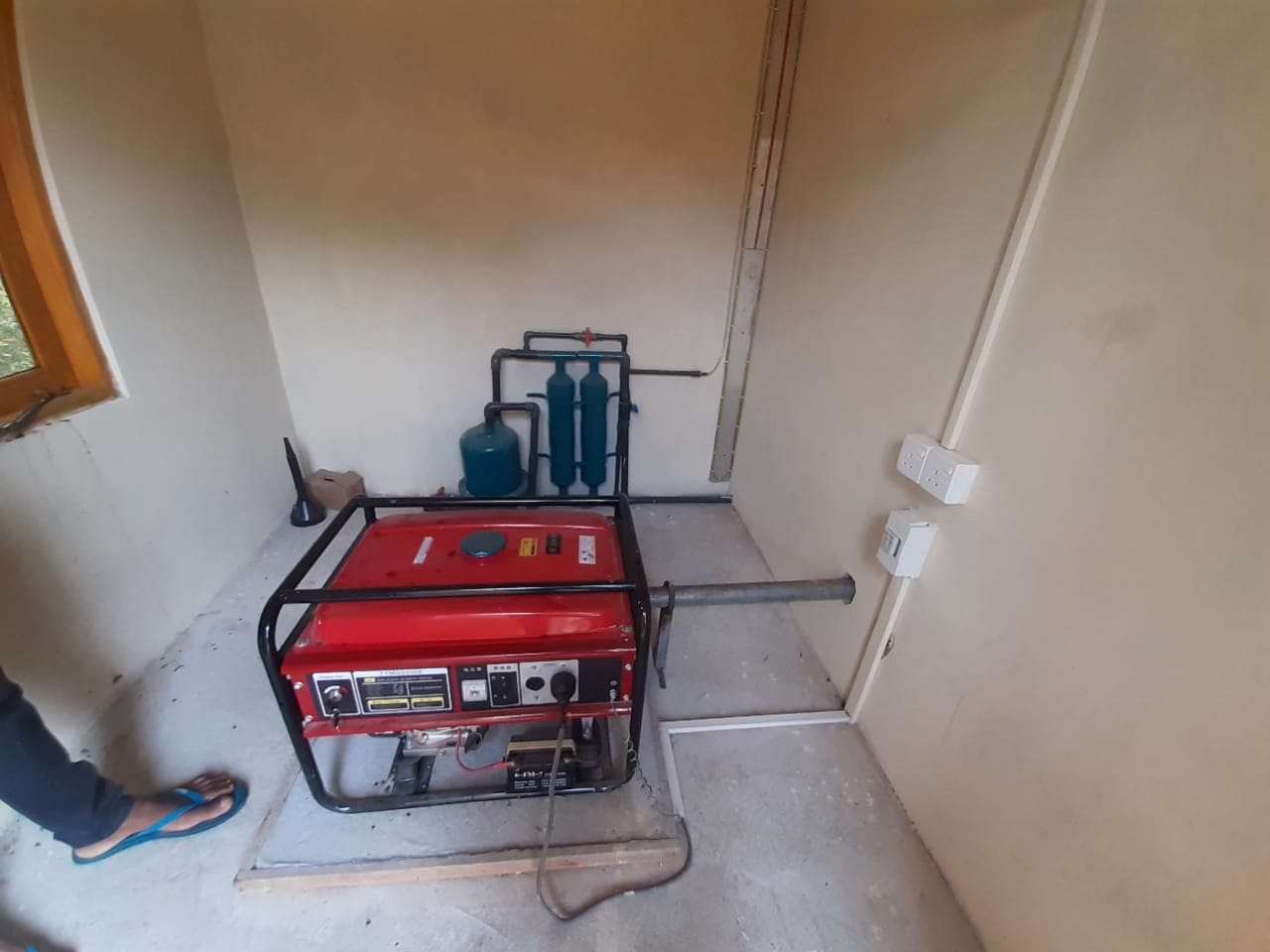Electricity Generation by bio gas
Presently the world is crawling forward in the presence of challenges and global environmental crisis which result in causing power shortages. These have affected the generation of electricity in the globe with unexpected impacts like; Increasing of the Energy demand along with the population growth. Running out the fossil fuel content which is the major source of power and increasing its dependency. Changing and shifting of weather patterns including extreme disastrous weather conditions like floods, tornados, volcanic eruptions and droughts that could damage the power infrastructure and disrupt the power transmission lines. These have limited the power usage of the nations and have led the innovators towards the discovering of solutions which would be ecofriendly and sustainable at the same time.
Therefore, as the sole solution for this energy crisis, the world community always suggest to shift towards the renewable energy and power solutions with lower carbon footprint and with beneficial impacts to the eco-systems and organisms compared to the fuel-based and other non-renewable power generation. Bio gas can be mentioned as one of such renewable and easily obtained energy source. What is bio gas? Bio gas is a type of renewable energy source in the present world that produced through the anerobic digestion or fermentation of organic matter. A true benefit is that these organic matters can be obtained through our associated environment such as agricultural or animal waste, sewage sludge, and from food scraps. So, this energy source is able to obtain easily than the other renewable methods. Mainly the biogas typically contains about 50-70% of methane which is a potent greenhouse gas which make its capturing and combustion to reduce the climatic change. That is another outstanding advantage of the use of bio gas as the source of electricity. The collected organic wastes should be included inside in an oxygen free environment to support the anaerobic digestion of microorganisms. Due to this anaerobic digestion the organic matters were break down creating bio gas as a byproduct. The exposed bio gas was captured and purified to use as a source of energy. As an alternative energy source bio gas has the potential to play a significant role in the transition to a low-carbon energy system. It offers a sustainable and versatile energy source, which also helps in the reduction of greenhouse gas emissions, and provides a way to effectively manage organic wastes while generating valuable energy and resources.
Giving a valuable example to all the universities and educational institutions we, the faculty of engineering university of Jaffna, Kilinochchi premises have adopted ecofriendly practices for the above global power problems as usual. Under the supervision of the faculty of Agriculture, the Kilinochchi premises of the University of Jaffna maintain Electricity generation power plant using renewable energy source as discussed above, which is a most needed solution of the current industrial world to meet the economic and environmental advancement through the crisis in the desired way. If we observed our environment, you will definitely find a bunch of renewable energy sources. Truly there are many renewable energy sources that we can easily obtain within our vicinity. The faculty of engineering university of Jaffna physically holds many practical applications of the field of engineering providing innovative and creative ideas for upcoming Engineers of the nation to achieve the technological advancement that these students deserve in their career paths. One of such innovative way and the use of the renewable energy source is that maintaining a biogas electricity generating facility within the university premises. There are farm lands along with the animal husbandry system related to our university premises which collects the animal wastes and produces the bio gas thereby. The main source used in the bio gas facility is the use of cow dung from the milk cows adopting in the farm land. Starting from the farm houses where the cows have settled, through the cannel system the wastes were transported in to an underground tank where the anerobic respiration of the microorganisms take place. The organic wastes collected from the animal farm located within the facility were kept for the fermentation inside the grounded tank and the resulted gas content was collected and purified before using inside the engine. The bottom of the tank is always filled with the wastes that are collected through the cannel system like mentioned before while the other part is filled with the bio gas which is the byproduct of the anerobic digestion of the organic wastes collected. When a certain pressure level was reached, from the attached pipe line system the collected bio gas was taken out through a receiving end. The flowing of gas can be controlled by a tap in the pipe line system. One receiving end was connected to a combustion engine placed in a closed room near the underground tank and the bio gas was fed into the engine. When the machine was powered by the battery within the engine the bio gas was taken in and electricity is generated. This electricity is sufficient only for the facility according to the engine we have. In these types of motors, biogas is combusted externally, which in turn heats the sterling motor through a heat exchanger. The gas in the sterling motor hence expands and thereby moves the mechanism of the engine. The combustion of biogas in the engine drives a piston, which in turn rotates a crankshaft. The rotational motion is then used to generate electricity through a generator connected to the engine. The electricity produced was used on-site as the consumable electricity in the biogas facility. One end of the receiving gas line was forwarded to a household facility within the farm to use in the place of LP gas and another receiving end was connected to an oven located nearby. Also, one pipe starting from the top of the bio gas tank which was directed to the bottom from the inside was taken out to get fertilizers for the crop fields cultivated nearby. The output from the combustion engine as follow; Output voltage: 220 V. Frequency: 50 Hz. Generating rated power: 5.0 kW. Max power: 5.5 kW. Concentrating on the practical applications is a must in an Engineering faculty. Like the above establishment the process of generating electricity has accomplished valuable benefits for the community and the for the environment. Educational opportunities: the presence of bio gas electricity generating facility always provide valuable educational opportunities specially for us the engineering students. It allows them to gain hand on experience in the design, construction, and operation of any renewable energy systems. Students can learn about biogas production, energy conversion, electrical engineering, and environmental management, among other related topics, fostering practical skills and enhancing their understanding of sustainable technologies. There are also ongoing researches about these power plants. This limits the students from visiting other renewable energy power plants as we have our own power plants. Cost effectiveness: according to the scale of the bio gas electricity generating facility we can potentially save energy on the daily costs. This on-site generation of electricity reduce the purchasing the electricity power from the external sources. Generally, this can lead to a long-term financial saving method and can increase the financial sustainability over the years inside our faculty. Waste management: the organic wastes daily generated in the faculty can be used effectively to generate the consumable electricity supply. This saves the costs that we generally using for the raw materials inside a power generating facility while managing our own wastes from cafeterias and kitchen, the animal farm near the power plant and also agricultural wastes. This is greatly helpful in reducing the number of wastes sent to the landfills and the garbage that sent for the burning processes. Hence, this circulated economy method has accomplished to turn the wastes into a valuable energy source. Environmental Sustainability: this is a cleaner energy source when compared with other energy resources. This produces a low carbon foot print generally. As mentioned before this bio gas electricity generating method involves trapping some of the greenhouse gases and this proves that this is process of generating electricity by even helping the surrounding environment to become more sustainable. Research and innovations: When looking in to this in the perspective of the undergraduates, this facility provides a great platform for researches which will eventually leading for innovations. This provides us the undergraduates the possibility to conduct experiments, analyze the input and the output data that leads to innovative ideas. This facility also reminds us to develop new technologies for the generation of electricity. If the facility was developed further the local community would learn about renewable energy and sustainable practices suitable for the ongoing world through the crisis. Moreover, excess electricity generated even could be fed into the national grid, potentially providing clean energy to surrounding areas.
The administration of the faculty of agriculture maintains and supervise the biogas electricity generating facility. Further we are supposed to promote the current community engagement for the bio gas electricity generating facility than before. To achieve this, these can be suggested as some quick procedures that we would follow; A public awareness campaign: we can target the local community, including residents, businesses of the region and show them the opportunities they would have by investing and helping in the development of the bio gas station. Volunteer and Internship Opportunities: Creating opportunities for the community members, like undergraduates and young professionals, to volunteer or intern at the facility. Further we would be grateful to establish the partnership with local community organizations, and environmental societies for the development and long-term existence of the bio gas electricity generating facility. Expanding a biogas electricity generating facility within a campus can be a great initiative for promoting sustainability and reducing the carbon footprint as mentioned earlier. Increasing the daily bio gas production rate to generate more electricity daily. For this we can use wastes from the cafeterias and the nearby faculties as orogenic wastes to input as raw materials. Diversification the feedstock sources. Exploring the use of biomass resources like the energy crops and crop residues to maintain the constant supply of the feedstock throughout a considerable period of time. Upgrade the gas cleaning system and the technology used in the system: we can install combined heat and power system to utilize the excess heat generated during the combustion inside the engine. We can improve the efficiency of the combustion engine generally by installing an upgraded version so that it could be possible to increase the energy capacity and would generate the electricity in a constant desired voltage for a long time. Can expand the energy storage technologies like battery storage and storage can be integrated into the facility. From these we could generate and distribute energy that would power up the nearby residence facilities of the campus and ultimately, we could supply electricity further into the national grid as well as to the faculty also. Also, we can integrate smart grid technologies. By this we can optimize electricity generation, distribution, and consumptions within the campus. By an advanced metering system and through demand responses we can monitor and control the energy usage in real-time, maximizing efficiency and reducing the wastages. We can also use the expanded facility as an educational source to reach the mind of young engineers about the importance of use of renewable and sustainable energy sources to generate electricity. Promoting the use of renewable energy sources is the best solution for the power and energy crisis in today’s world. Generation of electricity using the bio gas is a best practice when considering the above situation. As the undergraduates of the faculty of Engineering University of Jaffna we are lucky to observe all kind of renewable energy sources are in the process of generating electricity. Wind power, Solar energy and also the discussed bio gas facility. Animal wastes were used as the source of the bio gas and these raw materials were forwarded to the process of generating bio gas which environmentally stabilize and become beneficial throughout the process in many ways. This generation of electricity through renewable energy sources would have given many advantages and omissions were impossible compared with those benefits. The above power facility always in a state, that we could develop and uplift its processes and production outputs to influence a vast area emphasizing the true value of the use of renewable energy sources to the community.
References
https://energypedia.info/wiki/Electricity_Generation_from_Biogas#Appropriate_Combustion_Engine
https://www.sciencedirect.com/science/article/pii/S2352484722023939
https://ieeexplore.ieee.org/document/9041618
E.M.Isuru Indrajith
2021/E/035






